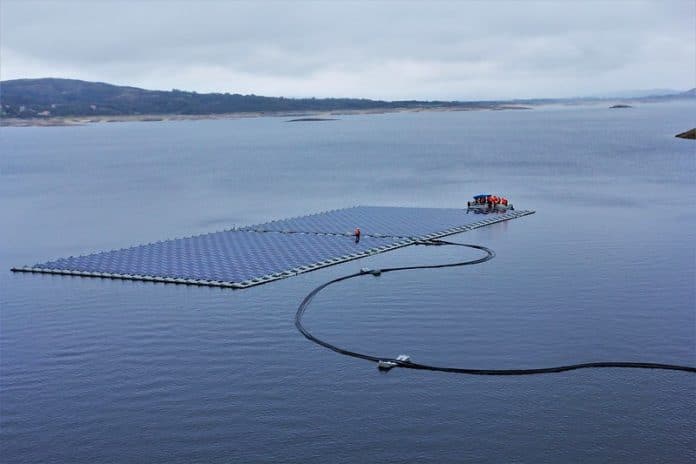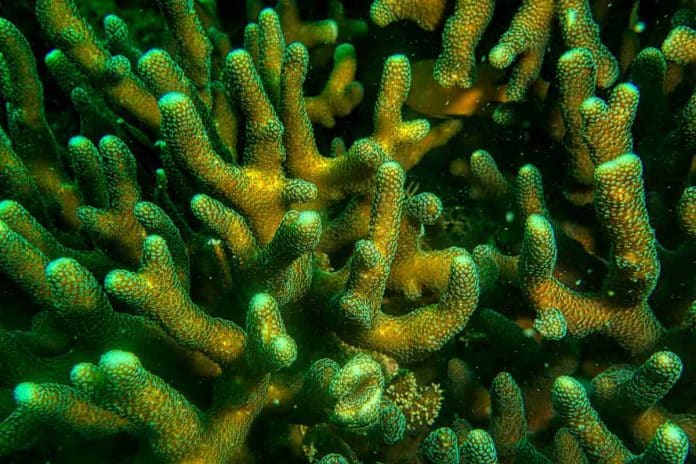Josheena Naggea, Hoffmann Fellow, Innovation for Small-Scale Fisheries and Aquaculture, World Economic Forum
Alfredo Giron, Head of Ocean, World Economic Forum Geneva
Ana Spalding, Director of the Adrienne Arsht Community-Based Resilience Solutions Initiative & Staff Scientist Smithsonian Tropical Research Institute, Nippon Foundation Ocean Nexus Principal Investigator, EarthLab, University of Washington
- Ocean solutions will be among the subjects of discussion at COP28, but those most affected by climate change are often underrepresented during these conversations.
- The ‘tropical majority’ must be adequately represented to help ensure that more adapted solutions are coming ‘from the tropics for the tropics’.
- By recognizing the expertise of Indigenous people and local communities, we can shift the global conversation from tropical crises to tropical opportunities.
Leaders from across the world will convene to discuss ocean and climate solutions at the United Nations’ climate conference, COP28. However, all too often, the voices of those most affected by climate change are underrepresented.
People in the tropics, or the ‘tropical majority’, encompass billions of voices living in the most biodiverse regions of the world, who often have intricate connections to the ocean, as well as geographic extent and deep knowledge of ocean ecosystems.
Indeed, what we may typically refer to as small island developing states are, in fact, large ocean states. Mauritius, for instance, has an ocean area 1,000 times its landmass and is also a biodiversity hotspot where marine species face extinction risks.
However, like many other island states, Mauritius also faces climate impacts – from rising sea levels to an increasing frequency of disasters.
Talk must shift from tropical crises to tropical opportunities
With global climate discussions set to be held during COP28 in the United Arab Emirates, we must push the conversation from tropical crises to tropical opportunities.
Large ocean states often make multiple efforts to develop their ocean economies sustainably and equitably, and leaders, experts, knowledge-holders, and communities from the tropics possess a unique understanding of the ocean’s intricacies.
Better inclusion of the tropical majority would, therefore, ensure that more adapted solutions are coming ‘from the tropics for the tropics’ for greater resilience in the face of climate change.
Here are four actions that can help bring a tropical majority lens to achieving tangible ocean sustainability solutions.
1. Centring equity in ocean science and governance
Ocean science and governance have long been dominated by institutions and researchers from developed nations. To achieve ocean sustainability, we must redress power asymmetries and take intentional steps toward equity, ensuring that researchers, experts and decision-makers from tropical regions are actively involved in shaping ocean policies and governance initiatives.
This can be achieved through international collaborations, joint research programmes and funding opportunities that prioritize the inclusion and support leadership of tropical researchers across temporal and geographical scales and sectors.
Governance approaches must also ensure accountability for historical impacts on tropical coastal states and, through programmes such as the climate loss and damage funds, make sure that future funding and benefits are equitably distributed.
There is also a need to formalize existing and potential hybrid systems of governance – for instance, beach management units help co-manage fisheries resources in coastal areas in East Africa.
By acknowledging, empowering and supporting the unique expertise and experiences of the tropical majority, especially Indigenous peoples and local communities, we can foster a more comprehensive understanding of ocean dynamics, vulnerabilities and solutions.
2. Reconnecting people and the ocean
For many communities in tropical regions, the ocean is an integral part of their cultural identity and livelihoods.
Reconnecting people with the ocean requires ensuring access to ocean resources and coastal areas through reversing privatization and degradation and stopping top-down, exclusionary “fortress conservation”.
By integrating traditional ecological knowledge into scientific research and management strategies, we can enhance our understanding of marine environments and identify sustainable practices that have been successfully employed by local communities for generations.
This mutual exchange of knowledge also strengthens community resilience, fosters stronger local stewardship of coastal and marine areas, and supports livelihoods highly dependent on the ocean like small-scale fisheries and coastal tourism.
3. Redefining ocean literacy
Ocean literacy should not be limited to scientific jargon accessible only to experts. It must be redefined to encompass a broader audience, including local and Indigenous knowledge and practical ocean wisdom.
In tropical regions, where communities often live near the ocean, enhancing ocean literacy can inspire ocean stewardship. Educational programmes can communicate ocean science in a culturally relevant, safe, and accessible manner and help more tropical residents discover the beauty and importance of coastal and marine ecosystems and resources.
Engaging storytelling, art and traditional knowledge can be powerful tools to inspire the next generation of ocean stewards and encourage broader public support for sustainable ocean policies.
4. Decolonizing ocean science
Historically, the study of ocean science has been influenced by colonial perspectives that disregarded the wisdom and practices of Indigenous and local communities.
Decolonizing ocean science involves recognizing and rectifying these historical injustices, building equitable partnerships with Indigenous and local communities, respecting their rights and knowledge, and ensuring that research conducted and data collected from tropical regions includes and benefits these communities directly.
This requires concerted efforts to build capacity for all relevant parties to understand and interact with data and the knowledge generated from it.
Building better solutions for global ocean challenges
By centring equity in ocean governance, reconnecting people and the ocean, redefining ocean literacy, and expanding ocean science to encompass all knowledge systems and approaches, we can better build solutions to pressing ocean challenges.
We must decolonize science while broadening the scope of who leads, who participates, and who benefits. Being aware of power dynamics at play at multiple scales can help ensure we are not drowning out the tropical majority in discussions pertaining to solutions in the ocean-climate nexus.
Incorporating tropical perspectives in ocean science and governance is not solely a moral and ethical imperative; it is also a pragmatic approach to achieving sustainable and tangible solutions for ocean sustainability.
It is high time to recognize the invaluable contributions and expertise of the tropical majority, understand why their voice matters in ocean sustainability, and work together towards a shared goal for a healthier, more resilient, and sustainable ocean for all.
Josheena Naggea is a visiting scholar at the Charles Telfair Centre.
This article is republished from the World Economic Forum. Read the original article.
Main photo by lex on Flickr
Charles Telfair Centre is an independent nonpartisan not for profit organisation and does not take specific positions. All views, positions, and conclusions expressed in our publications are solely those of the author(s).











